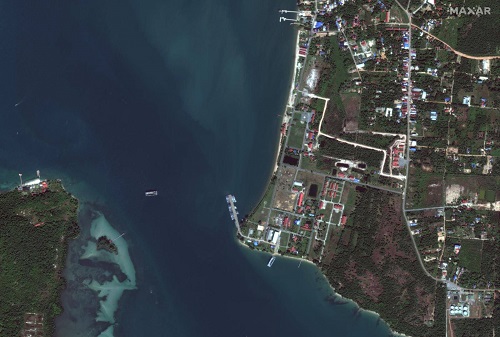This post has already been read 783 times!
In the four years since US intelligence first disclosed to The Wall Street Journal that an agreement had been reached granting Beijing military access to Cambodia’s Ream naval base, analysts have watched the development of what many suspect is China’s next overseas military base.
Now, satellite images from Maxar Technologies reveal the dramatic transformation the Cambodian naval base, near Sihanoukville on the Gulf of Thailand, is undergoing. This Chinese-funded project would extend Beijing’s military reach into the contested waters of Southeast Asia.
The latest satellite images acquired in June show an assortment of Chinese-funded building activities. Visible are land clearance operations, land reclamation efforts, the construction of several new buildings, roads and importantly a large pier much bigger than the base’s original jetty. New fencing is visible around the base’s perimeter, and buildings funded by the US have been demolished and replaced.
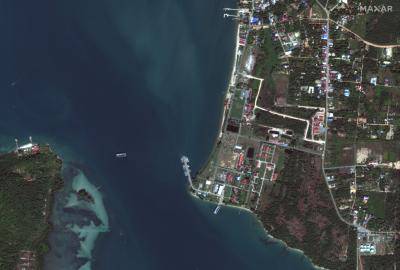
Cambodia’s Ream naval base before the current building works, with lush green covering around the military site, well-maintained lawns and a small pier. ©2023 Maxar Technologies
In the past 18 months, Cambodian Prime Minister Hun Sen is reported to have allocated 157 hectares to the building of air defences, general command facilities and a naval radar installation near the base. Cambodian state media have reported that new storage facilities, a hospital, drydocks and slipways are planned at Ream.
Hun Sen has been in power since 1998, but with US influence in Cambodia waning amid his increasingly autocratic tendencies, he has courted Beijing, dropping his hostility to China for its role in supporting the Khmer Rouge in the 1970s. Beijing has responded with investment and economic incentives, not least in Sihanoukville itself. Cambodia has reciprocated by offering diplomatic support to China.
An ‘iron-clad’ relationship
According to Sebastian Strangio, Southeast Asia editor of The Diplomat: ‘Hun Sen’s corrupt and highly personalized rule has created conducive conditions for a rapid expansion of Chinese influence in Cambodia, from migration and infrastructure investment to growing proximity in the defence and security realm.’ As a result, Phnom Penh and Beijing’s relationship is now ‘iron-clad’, he says.
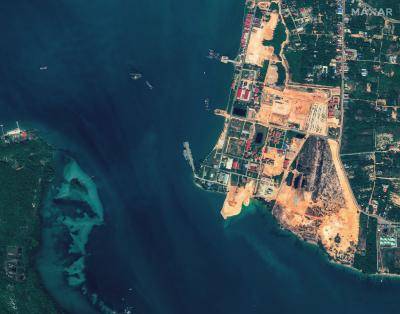
Building work has started, with several areas stripped of their cover and land development activities throughout the site. ©2023 Maxar Technologies
In the past decade, at ASEAN summits presided over by states such as Vietnam or the Philippines, Cambodia led the way in watering down ASEAN communiques critical of China’s conduct in the South China Sea and, as in 2016, blocked them entirely. This year, Cambodia vetoed a proposal from Indonesia for joint military exercises by ASEAN members in the South China Sea.
After a period in which Hun Sen’s regime denied any Chinese involvement at Ream, both governments now stress that the redevelopment of the base is part of an effort to modernize the Royal Cambodian Navy and is one of numerous Chinese projects to develop Cambodia’s infrastructure. State media in Phnom Penh have reported that Beijing’s primary role involves dredging the harbour and repairing ageing warships and drydocks.
Months of denials
Cambodia’s constitution prohibits foreign military bases on its soil. Yet, in the past two years, statements from Cambodian and Chinese officials have hinted at a larger role for Beijing beyond aiding Cambodia’s small navy.
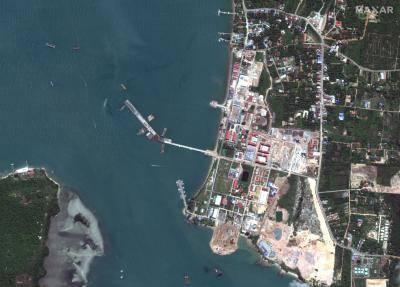
Work is under way on new components including a large pier, additional buildings and extensive land reclamation that upgrade the port’s capabilities. ©2023 Maxar Technologies
In October 2020, Admiral Vann Bunlieng of the Royal Cambodian Navy confirmed that China was behind the new developments at Ream after months of denials. In June 2021, Cambodia’s defence minister, Tea Banh, revealed Beijing was helping develop the base ‘with no strings attached’.
The following year, an unnamed Chinese official present at the ground-breaking ceremony at Ream told The Washington Post that the Chinese military would use ‘portions of the base’, a statement the Cambodian embassy in Washington later rejected. More recent reporting in The Washington Post suggests that People’s Liberation Army Navy (PLAN) personnel may already be at Ream wearing Cambodian military uniforms to avoid attracting attention.
Of particular interest is the new pier at Ream. Building work started this year and it is similar to the pier at China’s only other overseas base, in Djibouti, which has accommodated Chinese amphibious transport ships, replenishment ships and, since last year, warships. Ream’s new pier could eventually berth larger vessels and serve as a support base for the PLAN.
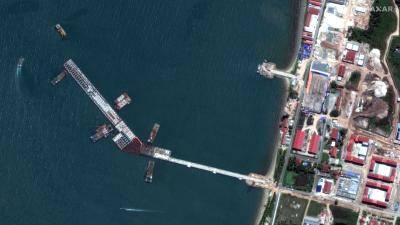
Extending into deeper waters, a new pier is apparent, surrounded by barges and cranes. This undertaking could enhance the logistical support for a diverse fleet of naval vessels, large and small. ©2023 Maxar Technologies
A Chinese naval base at Ream has implications for the balance of power across Southeast Asia. The PLAN is the world’s largest navy, but in contrast to its principal competitor, the US Navy, it has no overseas bases in the Indo-Pacific. Even a modest logistics hub at Ream would give Chinese warships greater range and a permanent presence in the Gulf of Thailand and the waters of Southeast Asia.
Regional consequences
Given China’s fortified islands in the South China Sea, the Ream base may not change the immediate balance of power, says Bill Hayton, Associate Fellow in the Asia-Pacific Programme at Chatham House, but its location in the geographical heart of the ASEAN region is a challenge. ‘Ream is next to Vietnam, close to Thailand [an American treaty ally], and not far from Malaysia and Singapore, both British security partners,’ he says. ‘It will provide a platform from which China can expand its footprint in the region.’
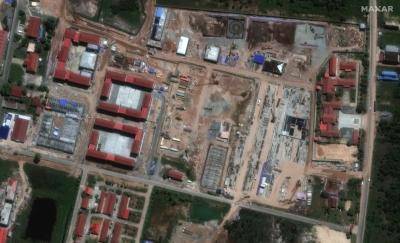
Activity is visible at the Ream base as various sections of new edifices, roads and other infrastructure are built. Expansive open storage areas have also been organized to accommodate the supplies and equipment needed for ongoing building work. ©2023 Maxar Technologies
For Vietnam, Hun Sen’s former patron, the Ream base creates a ‘two-front dilemma’, adds Hayton: ‘It forces Vietnam to keep an eye on developments in the Gulf of Thailand and the South China Sea, [and gives] the Chinese navy reason to patrol around Vietnam’s coast.’
A Chinese military presence in Ream would also draw a negative response from the US. The US Indo-Pacific Command would view a Chinese base in Cambodia as a sign of its declining influence in a region the Biden administration has identified as among the most important in the world.
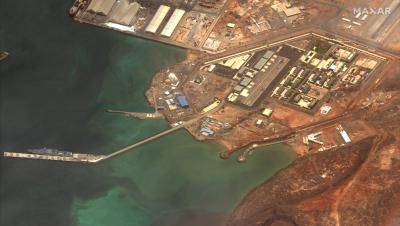
Djibouti naval base. There are striking similarities between China’s only other overseas base, in Djibouti, and the pier being built at Ream, Cambodia. ©2023 Maxar Technologies



